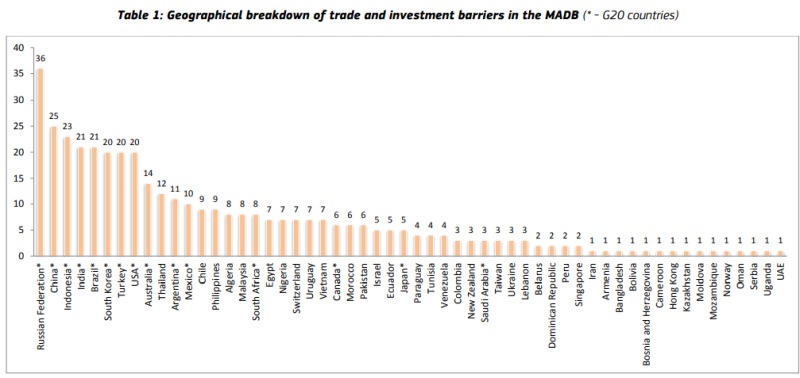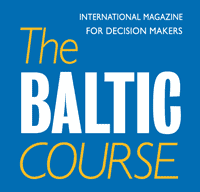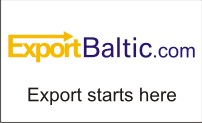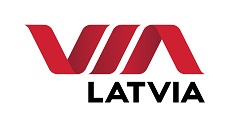Analytics, EU – Baltic States, Investments, Markets and Companies, Modern EU
International Internet Magazine. Baltic States news & analytics
Wednesday, 17.12.2025, 00:23
Lifting trade and investment barriers for European businesses
 Print version
Print versionMore than 30 million jobs in the EU are supported by European exports to outside the European Union countries. The member states export relationships with the “third countries” (i.e. countries outside the EU) are arranged by the Commission: this is an exclusive EU competence. Through the EU’s trade agreements, the member states can open new markets for exporters and businesses. In this way, the member states acquire access to foreign markets on the same terms as the EU suggests and offers, in line with the interests of EU producers and consumers’ safety. Therefore so-called “full trade liberalisation” without access to foreign markets on European terms is meaningless to the EU’s exporters.
Through the Market Access Partnership with the EU member states during 2017, the Commission removed 45 trade barriers – including several long-standing ones; this was 25 more lifted barriers than in 2016. Since the start of the new Commission at the end of 2014, it helped the EU states, industries and business to remove 88 barriers across a wide range of sectors –agro-food, aircraft, automotive, ceramics, cosmetics, ICT & electronics, iron & steel, machinery, medical devices, pharmacy, textiles & leather, wood & paper, services, etc. This lifting of barriers created € 4.8 billion additional exports’ profits for EU companies every year, which is twice the profits acquired during the time of the previous Commission up to 2015.

Commenting on the new report, Trade Commissioner Cecilia Malmström confirmed that the EU is presently the world's largest and most accessible market; the EU is determined to ensure that foreign markets remain equally open to firms and products.
However, due to recent rise in protectionism in many parts of the world, the Commission’s task is to remove trade barriers while ensuring that European companies have adequate access to foreign markets.
Commission report to the Council and the Parliament see at:
http://trade.ec.europa.eu/doclib/docs/2018/june/tradoc_156978.pdf
The EU's enhanced Market
Access Strategy helped to remove 45 obstacles (fully or in part in 2017, more
than twice as many as in 2016). The barriers removed spanned across 13
key EU export and investment sectors, including aircraft, automotive,
ceramics, ICT & electronics, machinery, pharmacy, medical devices,
textiles, leather, agri-food, steel, paper, and services.
Thanks to those barriers removed between 2014-16 alone, in 2017 EU companies exported an additional €4.8 billion.
The report also shows that 67 new barriers were recorded in 2017, taking the total tally of existing obstacles to a stark 396 between 57 different trading partners around the world. This confirms the worrying protectionist trend identified in previous years. China displayed the largest increase in new barriers in 2017, followed by Russia, South Africa, India and Turkey. The Mediterranean region also showed a notable rise in barriers for EU companies. The nine countries with the highest number of trade barriers still in place are all G-20 economies.
Examples of barriers eliminated during 2017:
•
Recognition
of safety standards used by the EU machinery industry in Brazil's new safety
legislation;
•
Elimination
of administrative barriers for services in Argentina;
•
Removal
of restrictions on copper and aluminum scrap, and paper in Turkey;
•
Removal
of animal and plant health and hygiene barriers related to bovine exports from
some EU states to China, Saudi Arabia and Taiwan;
•
Elimination
of certain restrictions on poultry exports from some EU states to Saudi Arabia
and the United Arab Emirates.
The Report on Trade and Investment Barriers is fully based on concrete complaints received by the Commission from European companies. It has been published annually since the beginning of the 2008 economic crisis.
Many more concrete examples and the Report on trade barriers see at: http://trade.ec.europa.eu/doclib/docs/2018/june/tradoc_156979.pdf
During 2018, the
Commission has also launched Market
Access Days in the EU states in order to raise awareness among smaller
companies of how the EU can help address the barriers they face. For example,
following the publication of the second Report on the Protection and Enforcement of
Intellectual Property Rights (February 2018), the
Commission will publish an Implementation
Report of the existing different trade agreements.
See
the second Report at: http://trade.ec.europa.eu/doclib/docs/2018/march/tradoc_156634.pdf
In
its European "Trade for All"
strategy,
the Commission has made enforcement of trade rules a top priority along with a
sharper focus on the implementation of trade agreements, so that European companies can compete on a level playing
field when seeking export and investment opportunities in third countries. The
EU has all adequate tools and means to eliminate trade barriers, bring dispute
settlement action, and impose trade defense measures in cases of unfair trade.
Trade for all brochure (published in 2015, 40 pages, can be
seen at: http://trade.ec.europa.eu/doclib/docs/2015/october/tradoc_153846.pdf
More information on the following websites: - Report; - Factsheet; - Market
Access Data Base - register of complaints; - Case study; - Report
on the Protection and Enforcement of Intellectual Property Rights
On export trade from EU see: http://madb.europa.eu/madb/barriers_crossTables.htm?isSps=false
General source: http://europa.eu/rapid/press-release_IP-18-4286_en.htm?locale=en








 «The Baltic Course» Is Sold and Stays in Business!
«The Baltic Course» Is Sold and Stays in Business!

